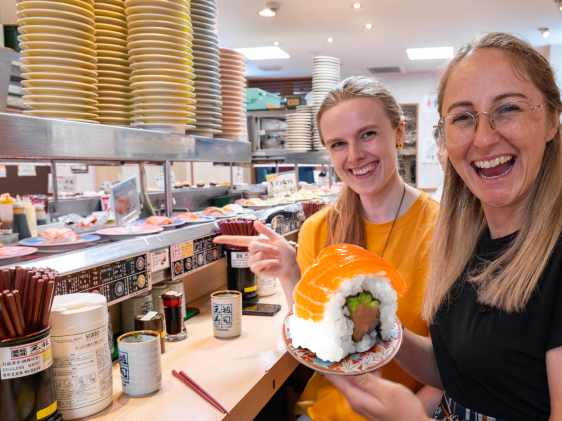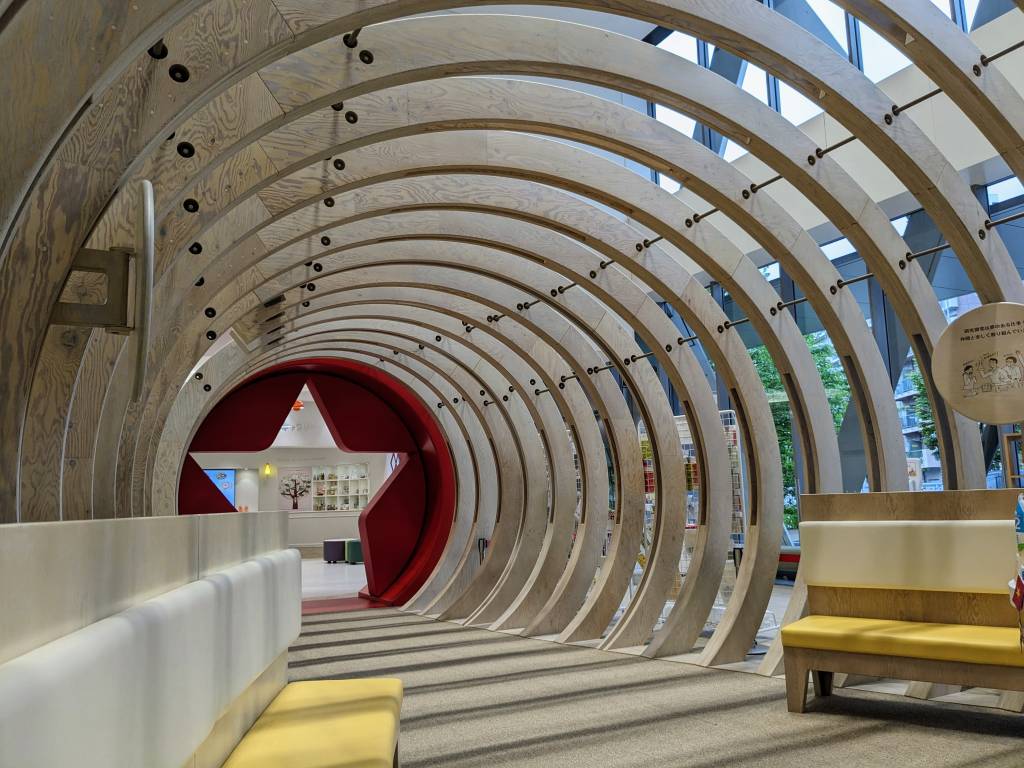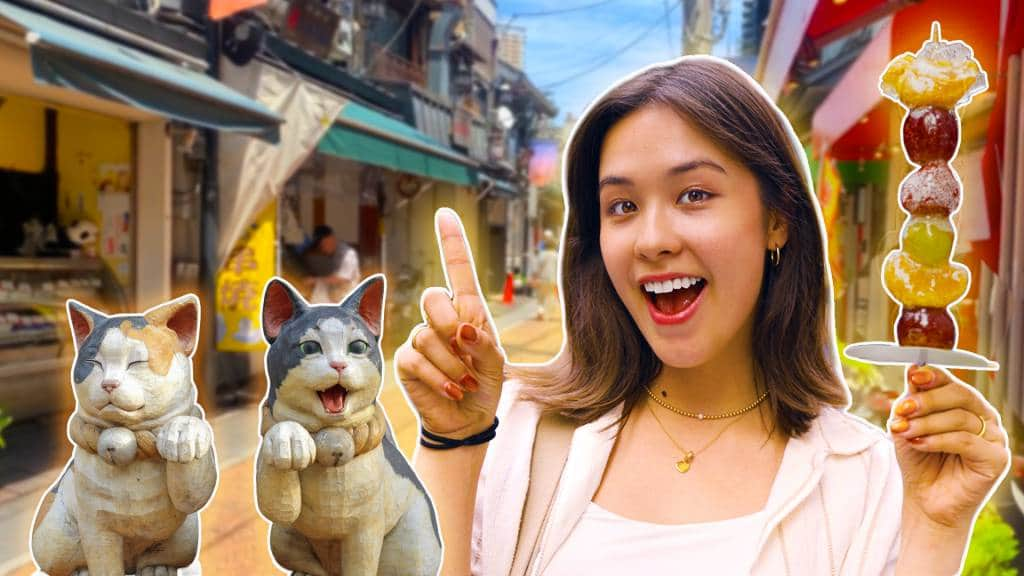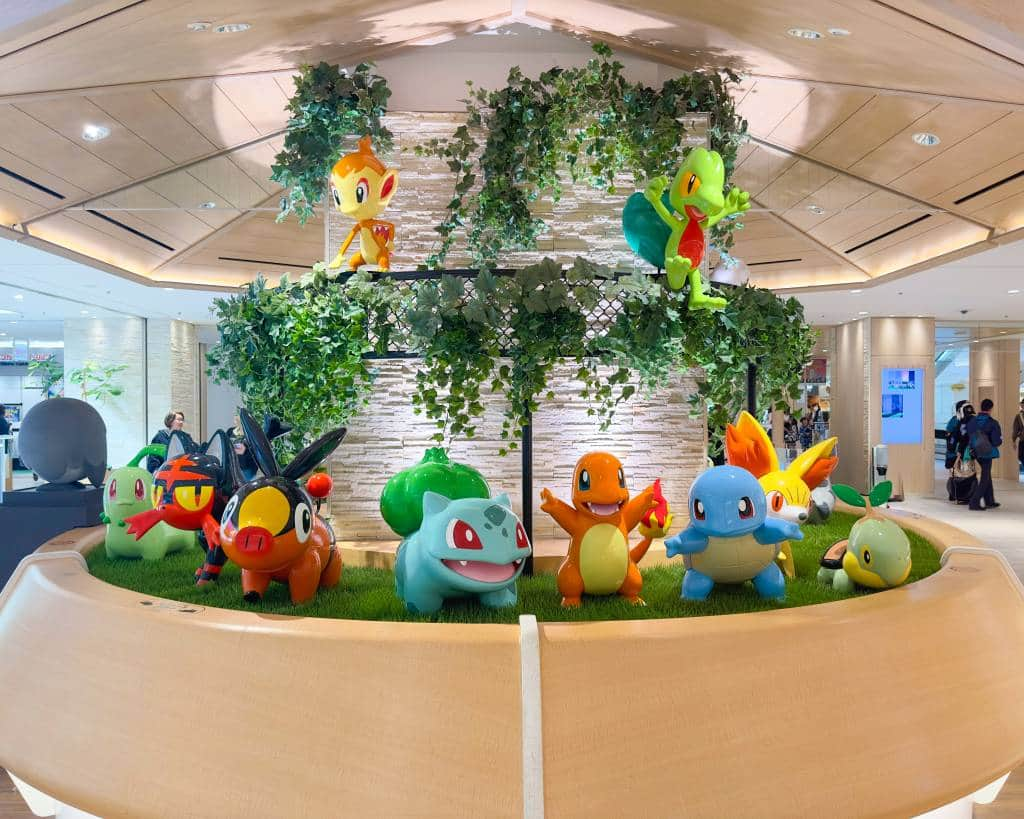Ever wondered what Tokyo was like back in the day? You know, like waaaayyy back in the day? Here’s the second installment in our special two-part series on the Eastern Capital’s past. A guide through Edo Tokyo history, we look at the layout, neighborhoods and some of the more standout attractions of the era.
If you’ve seen our Tokyo area guides section, you’ll have noticed that modern Tokyo is … big. Very big. Quite decidedly more than you can really see in a day. But fear not: that’s 400 years of urbanization you’re looking at. Old-time Edo was much smaller, and there’s not all that much of it left, thanks to various fires, the Great Kanto Earthquake of 1923 and Allied bombing during World War II. Edo was situated mostly in the modern Tokyo areas of Chiyoda, Bunkyo, Chuo, Minato, Sumida, Koto, Taito and parts of Shinjuku.
Edo Tokyo history: Old neighborhoods in the Yamanote area
The city was split roughly into two—areas in the western foothills, known as Yamanote (yeah, like the train), and Shitamachi, the parts of the city on the flatlands near Tokyo Bay and the Sumida River mouth. The heart of Edo Tokyo was the Shogun’s castle—now part of the Imperial Palace—and its two encircling moats. Edo took its moats seriously: the castle had two, the uchibori, or inner moat, and sotobori, or outer moat, made up of the Kanda and Edo Rivers.

The safest and most prestigious regions of Edo sat between the moats. The hatamoto (“upper vassals” or “bannermen”) and gokenin (“lower vassals”, lit. “honorable house person”) of the Tokugawa Shoguns lived there, in the neighborhoods of Jimbocho, Bancho, Kojimachi, Kasumigaseki—which translates as “Gate of Fog”, surely the best place name ever—and Nagatacho.
Today, Kasumigaseki and Nagatacho house the offices of cabinet ministers and the Diet of Japan, respectively, while Jimbocho is (red alert, nerds!) the used-book and publishing district. Back in the 1600s, though, this area was predominantly residential: the daimyō (great lords) there had estates with large houses and gardens. Those in power could sit with their slippers on in this part of Tokyo, secure in the knowledge that they were living their best lives.
Outside the uchibori were the samurai neighborhoods of Hongo, Koishikawa, Ushigome, Ichigaya, Yotsuya, Akasaka and Shiba. Many samurai under the Tokugawa Shogunate were bureaucrats, courtiers and administrators rather than the grizzled military men we usually think of—although they were allowed to kill any commoners who didn’t show them enough deference. Educated, often rather wealthy, and automatically accorded great respect, samurai occupied quite a comfortable niche in Edo society (at least in peacetime).

A tragic tale in Shinagawa
Not everyone in the samurai suburbs lived this high on the hog. One of the area’s saddest stories is that of Yaoya Oshichi, a Hongo greengrocer’s daughter who came to a grisly end in 1684. During one of the city’s frequent fires, she had met and fallen for a good-looking temple page while hiding at Shōsen-in. The way she tried to get to see him again was perhaps a little melodramatic: the next year she lit a serious fire, hoping they would meet at the temple. Like most cities in Japan, Edo back then was built mostly of wood, and arson was, well, frowned upon.
At Yaoya’s trial, the magistrate tried to get her to say she was 15 years old—too young for the death penalty. When she earnestly insisted she was 16, he was forced to sentence her, and she was burned at the stake at the Edo execution site of Suzugamori, in present-day Shinagawa, then on the outskirts. (There are memorials to Yaoya at Enjō-ji temple and Daien-ji temple, if you feel like paying tribute. You can also go to Suzugamori, if that’s your thing.)
Shinjuku and other areas
Yotsuya, near what is now Shinjuku, used to be outside the city. Hard to believe, I know. Up until the early 1600s, Yotsuya was relatively small and peaceful. Then the expansion of Edo Castle meant that shrines and temples had to be moved from their original sites in the inner city, and some of them moved to Yotsuya. The relocations brought workers, and a bigger town sprung up. The Meireki Fire of 1657 bumped the population up even further when some wealthier people moved from the crisped remains of places like Hongo and Kojimachi to the less-likely-to-burn environs of Yotsuya. They may have regretted this in 1695, when Tokugawa Tsunayoshi, aptly called the Dog Shogun, established a massive welfare kennel for stray dogs just outside Yotsuya Gate.
Akasaka was bit fancier than Yotsuya. In fact, it’s still very fancy; Akasaka Palace, in what is now neighboring Moto-Akasaka, stands on land that once belonged to the clan of the Kishū Domain, a major branch of the ruling Tokugawa clan, and it is now one of Japan’s two State Guest Houses. Tōgū Palace, in the same area, houses the Crown Prince Naruhito and his family. Also in Akasaka is Hikawa Shrine, which was constructed by Tokugawa Yoshimune in 1730, and became his personal shrine.
The district of Koishikawa is well worth a visit today to see the Edo-era Koishikawa Botanical Gardens, now part of Tokyo University. Tokugawa Tsunayoshi, the fifth Tokugawa Shogun, established it in 1684 as a medicinal herb garden, and in 1722 the eighth Shogun, Tokugawa Yoshimune, added a hospital for the indigent. Yoshimune also had a hand in the spread of sweet potatoes to Japan: in 1735, he allowed a man called Konyo Aoki to experiment with planting them, and the tuber soon became common throughout Japan as an emergency crop. Today, a sweet-potato-shaped monument stands in the garden.

Also in Koishikawa is the Koishikawa Korakuen garden. The daimyō Mito Mistukuni began work on it (not himself, obviously) in 1629. It is a Chinese-flavored garden, designed on the principal that gardens should allow one to enjoy power in peace, and includes a replica of China’s Seiko Lake, and a “Full Moon Bridge”.
Old Edo neighborhoods in the Shitamachi area
So much for the upper city. Everyone else lived lower down. The old Edo social order was fairly straightforward: right at the top, the Emperor and his court nobles. Just under them were the Shogun, holding the reins, his daimyō and their samurai. Then everyone else: merchants, artisans, commoners and peasants. Off to one side a bit, the clergy. The layout of Edo reflected this: the closer to power you were, the closer to it you lived.
Although some samurai lived outside the sotobori, in Shitamachi, most of that region was filled with dense neighborhoods such as Nihonbashi, Kanda, Shitaya, and Kyobashi, occupied by the mercantile classes, craftsmen, and everyone else. The basic unit of Edo at this time was the chō, a single main street lined by single-story row houses, with access controlled at either end by a gate. The population of the chō regions was equal to that of the daimyō, samurai and clergy put together, but controlled far less of the city.
Nihonbashi and surrounds
Nihonbashi was old Edo’s major mercantile center, housing the Mitsui wholesalers and the city’s major fish market, a sort of proto-Tsukiji. The area’s eponymous bridge—Nihonbashi literally means “Bridge of Japan”—was built in 1603, and formed the eastern terminus of two of the era’s major Kyoto-Edo transport routes, the Tokaido and the Nakasendo. This was the place to be—the bridge was the center of old Edo. Even today, Nihonbashi is the point from which distances to Tokyo are measured: all the numbers you see on highway signs indicate how far away from Nihonbashi you are. These days, the area overlaps parts of Akihabara, Otemachi, Yaesu and Ginza.

Otemachi, though outside the sotobori, used to be a daimyō area. It’s mostly made up of high-rises now, but before it burned in the Meireki Fire of 1657, the area was made up of great estates—the primary Edo house of the great Tokugawa-linked daimyō Matsudaira Tadamasa was there. The area was popular among daimyō because of its proximity to the Otemon, or “Great Hand Gate” of Edo Castle. Akihabara, today’s otaku HQ, sat just outside the city, at the gateway to north-eastern Japan. The area was home to craftsmen and tradesmen, who supplied the nearby daimyō suburb. Like many parts of the exceedingly combustible Edo, old Akihabara and Otemachi suffered badly by fire.
Fun fact: Yaesu, also near Nihonbashi, was actually named after a Dutch adventurer, Jan Joosten van Lodensteyn. For his services as middleman between Dutch traders and the first Tokugawa Shogun, he was granted a house in Edo. The Japanese, wisely dropping the ‘van Lodensteyn’ bit, knew Jan Joosten as Yan Yōsuten, Yayōsu for short. The area around his house became known by the name, and eventually as Yaesu. Edo’s last great artist, the ukiyo-e master Hiroshige, was born the son of the fire warden in the Yayōsu Quay section of Yaesu in 1797.
Fukagawa
Let’s move away from Nihonbashi to somewhere a little more remote: Fukagawa, an area below the Eitai River, named after Fukagawa Hachirozaemon, who developed the area using landfill. Like Yotsuya, Fukagawa was where Buddhist temples and shrines relocated after the 1657 Meireki Fire. With the temples came workers, artisans and merchants. In 1680, the poet Matsuo Bashō moved there. Late in the 17th century, the area was known for its large number of granaries and the grain trade.

Asakusa and Yoshiwara (this should be lit in red)
The areas of Asakusa and Yoshiwara were old Edo’s pleasure districts: Asakusa was known for theatre and geisha houses, Yoshiwara for what was called mizu shōbai, a euphemism that translated to “the water trade”. Asakusa developed as a place to get a drink and a show thanks to neighboring Kuramae. Feudal government employees used to be paid, literally, in rice—and Kuramae was where it was stored. Eventually the rice-keepers (fudasashi) began to exchange rice for money, or sell it at a margin, and the new influx of disposable cash meant that ‘luxury’ businesses sprang up nearby.
The wide plaza outside the Kaminarimon of Asakusa’s Sensoji Temple was a major gathering-place in old Edo (which makes sense: it is the city’s oldest temple), and the Sanja Matsuri—one of Tokyo’s three major Shinto festivals—has been held at Sensoji since at least the Edo area, if not hundreds of years earlier. Tokugawa Ieyasu financed the building of Asakusa Shrine, across the road from the temple, in 1649. He also rebuilt both of Sensōji’s gates, the outer Kaminarimon and the inner Hozomon, in the 1630s. He was attached to the temple, and designated it the tutelary temple of the Tokugawa family.
Yoshiwara, on the other hand, was not a place with a whole lot of history. The product of deliberate urban planning by the second Shogun, Tokugawa Hidetada, it was built in the 1600s. Prostitution was widespread in Edo, Osaka and Kyoto at the time. Hidetada, no supporter of these things, didn’t want to ban it; apart from its more obvious societal functions, it also distracted the growing classes of wealthy urbanites from engaging in too much political intrigue. So instead, he set up yūkaku districts in the country’s three major cities, and Yoshiwara became Edo’s version of Amsterdam’s famous De Wallen.

Yoshiwara was first established near Nihonbashi, near the start of the Tokaido. But after it—all together now!—burned down in the Meireki Fire, it was rebuilt closer to its present location north of Asakusa (a caution to the curious: the area is no longer a red-light district). In Yoshiwara, money talked—all customers were treated equally as long as they had the money. Samurai, though technically encouraged to avoid such places, were allowed in as long as they left their swords at the gate, and patrons were—again, technically—only allowed to stay for a night and a day. Yoshiwara was the fashion center of Edo, and thus Japan: fashion here was considered to be so important that what was ‘in’ in Yoshiwara became the trend for the whole country.
What was in vogue in Yoshiwara changed frequently, so there was a strong demand for merchants and artisans, and these people joined the district’s cast of hōkan comedians, kabuki actors, dancers, dandies, rakes, painters, tea-shop girls, courtesans, geisha and assorted hangers-on. But Yoshiwara had a sadder side: many prostitutes were too poor to pay for their own funerals, and so the dead of Yoshiwara were taken to Jōkan-ji Temple and left there. An estimated 25,000 prostitutes and fire victims (look, Edo burned a lot) fill the temple’s graveyard.
Some way south of hedonistic Yoshiwara and Asakusa lies Ochanomizu: “Tea water”. Water was drawn from the Kanda River here to make the Shogun’s tea, and the area is also close to Kanda Shrine. Originally over in Otemachi, the shrine was moved to Kanda in 1603 to make space for Edo Castle, and then, later, it moved to its present site near Akihabara. Also in the area is Yushima Seido, which was originally a private temple built in 1630, before the Shogun Tokugawa Tsunayoshi moved it to its present site in 1690. It functioned as a training school for Tokugawa bureaucrats from 1797 onward, following the Kansai Edicts of 1790.
Closing thoughts
Many other parts of old Edo have either vanished, changed beyond recognition, or been absorbed into other districts—Hamacho, Iriya, Suidobashi —and some are much more important now than they were then. The city burned, flooded, and was rebuilt; it has been flattened by earthquakes, rebuilt again, flattened again by bombs—and rebuilt yet again. The Tokugawa Shoguns are long gone, replaced by Emperors. Europeans got in, eventually. Edo turned into Tokyo. Tokyo history goes on.
Cheapo tip: You can find out more about Edo Tokyo history at the Edo Tokyo Museum or by exploring other Edo-era sightseeing spots.
Missed the first part? See Why This Isn’t Kyoto Cheapo (Or, a Free History of Edo Part 1) to catch up.
This series is a work in progress. Let us know your thoughts, discuss, make suggestions, and give us corrections on the community forum.






























